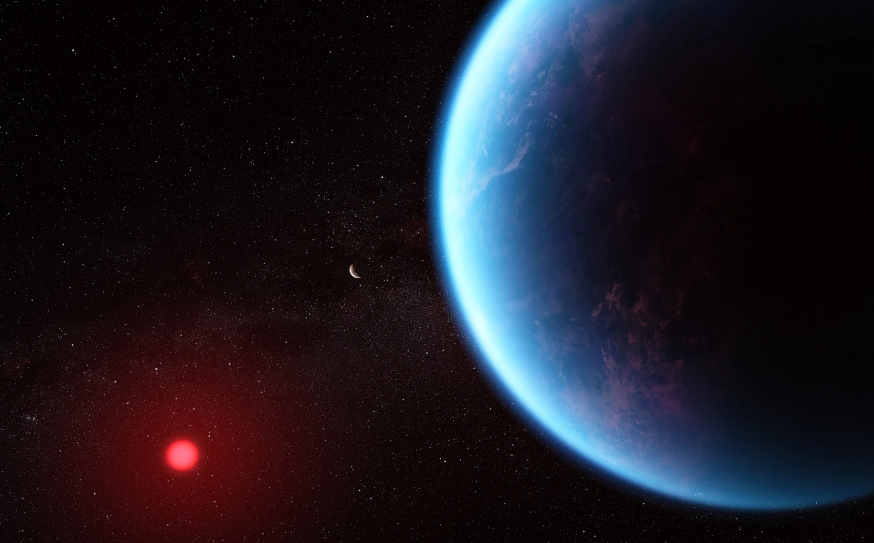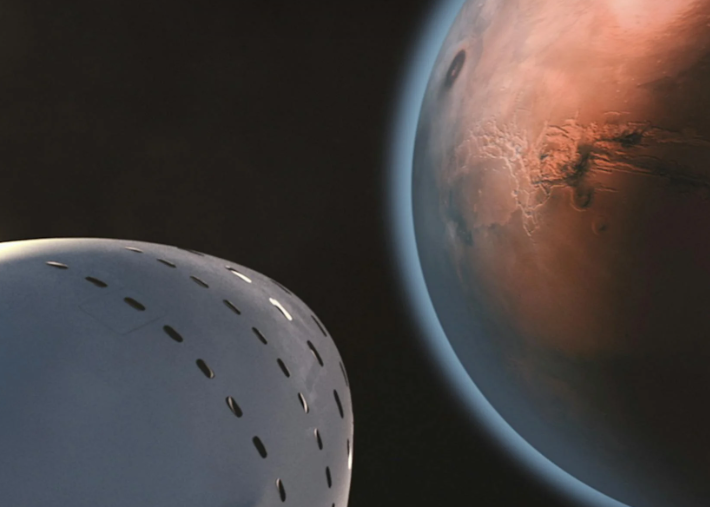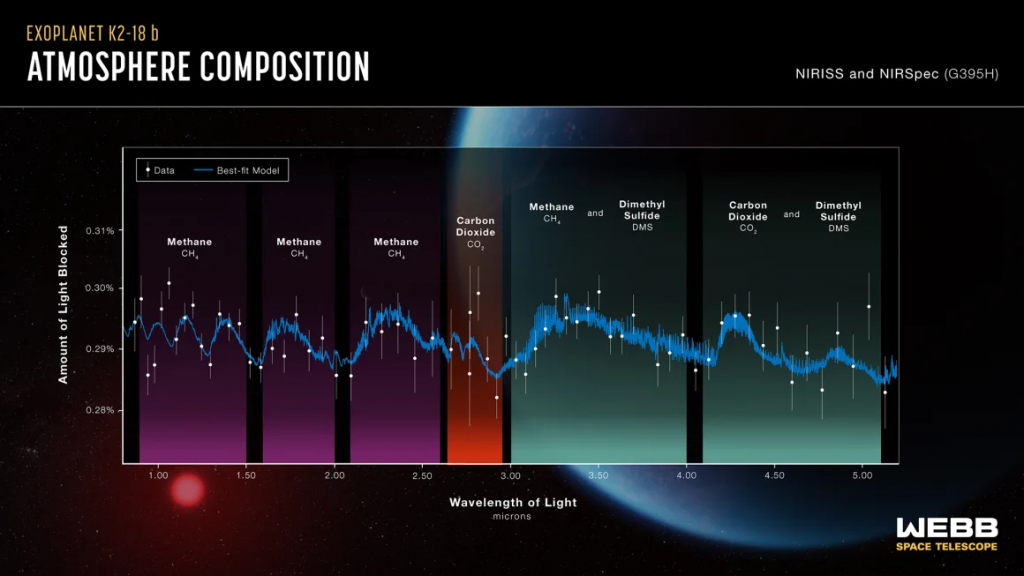Telescope Detects Potential Life on Distant Planet K2-18

Public Domain
In a groundbreaking development, astronomers using the James Webb Space Telescope (JWST) have identified chemical compounds in the atmosphere of planet K2-18b that may suggest the presence of life.
Located approximately 124 light-years away in the constellation Leo, K2-18b resides within the habitable zone of its red dwarf star, an area where conditions could allow for liquid water to exist.
A Glimpse into a Potentially Habitable World
The research team, led by Professor Nikku Madhusudhan from the University of Cambridge, detected the presence of dimethyl sulfide (DMS) and dimethyl disulfide (DMDS) in the planet’s atmosphere. On Earth, these compounds are predominantly produced by marine microorganisms such as phytoplankton. Their detection on K2-18b marks a significant step in the ongoing quest to find life beyond our solar system.

Understanding K2-18b: A ‘Hycean’ Planet
K2-18b is classified as a “Hycean” planet—a term describing worlds with hydrogen-rich atmospheres and vast, possibly global, oceans. With a mass about 8.6 times that of Earth and a radius nearly three times larger, K2-18b presents a unique environment that could support microbial life. Previous observations had already indicated the presence of methane and carbon dioxide in its atmosphere, further bolstering its potential habitability.
Cautious Optimism in the Scientific Community
While the findings are promising, scientists urge caution. The detection of DMS and DMDS, though compelling, does not constitute definitive proof of life. Alternative, non-biological processes could potentially produce these compounds. The research team estimates a 99.7% probability that these molecules indicate life, but confirmation requires achieving near-certain accuracy levels of 99.99994%.

“This is the strongest evidence yet for extraterrestrial life,” said Professor Madhusudhan. “However, further observations are essential to confirm these findings and rule out other explanations.”
The Road Ahead: Further Investigations Planned
The discovery has galvanized the scientific community, prompting plans for additional observations using JWST and other instruments. Researchers aim to gather more data to confirm the presence of these potential biosignatures and to better understand the planet’s atmospheric composition. These efforts are crucial in determining whether K2-18b harbors life or if the detected compounds result from abiotic processes.
Public Fascination and the Broader Implications
The potential discovery of life on K2-18b has captured the public’s imagination, reigniting discussions about humanity’s place in the universe. While definitive proof remains elusive, the findings underscore the importance of continued exploration and study of exoplanets. As technology advances, so too does our ability to detect and analyze the subtle signs that may one day confirm we are not alone.
You might also want to read: Other Planets May Have Real-Life “Jurassic World” Dinosaurs


